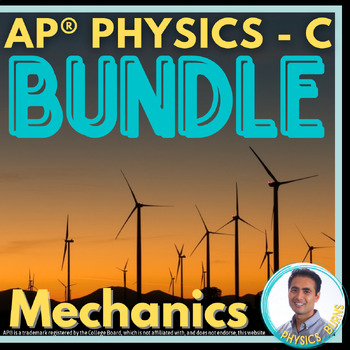AP® Physics C (Mechanics) | PPT, HW, Assessments | Entire Course Curriculum
- Zip
What educators are saying
Products in this Bundle (11)
showing 1-5 of 11 products
Description
AP® Physics C Full Year Curriculum. This bundle includes: PowerPoints, Homework, Quizzes, Reviews, Pacing Guide, Guided Notes, and Tests for every topic. Answers with explanations to everything. Everything is fully editable.
This bundle gives you everything you need to have your students be successful at the AP® Physics C Mechanics Class. If you would like a more detailed look at what is included in each unit, please look at this free PREVIEW.
Every example problem has a Youtube video that shows how to solve each problem with tips and tricks to teach your students in the most effective way possible.
Topics
- Kinematics
- Dynamics (Newton's Laws)
- Energy & Work
- Momentum
- Angular Motion
- Universal Gravitation
- Simple Harmonic Motion
_____________________________________________________________________________________________
This Bundle DOES NOT Include Labs
If You Are Interested In Purchasing Labs: Entire Lab Bundle
_____________________________________________________________________________________________
AP® is a trademark registered by the College Board, which is not affiliated with, and does not endorse, this website.
Check out my Youtube Channel, Facebook Group, and Follow my Store :)
Email Me For Custom Bundles: Raymondburnseducator@gmail.com





